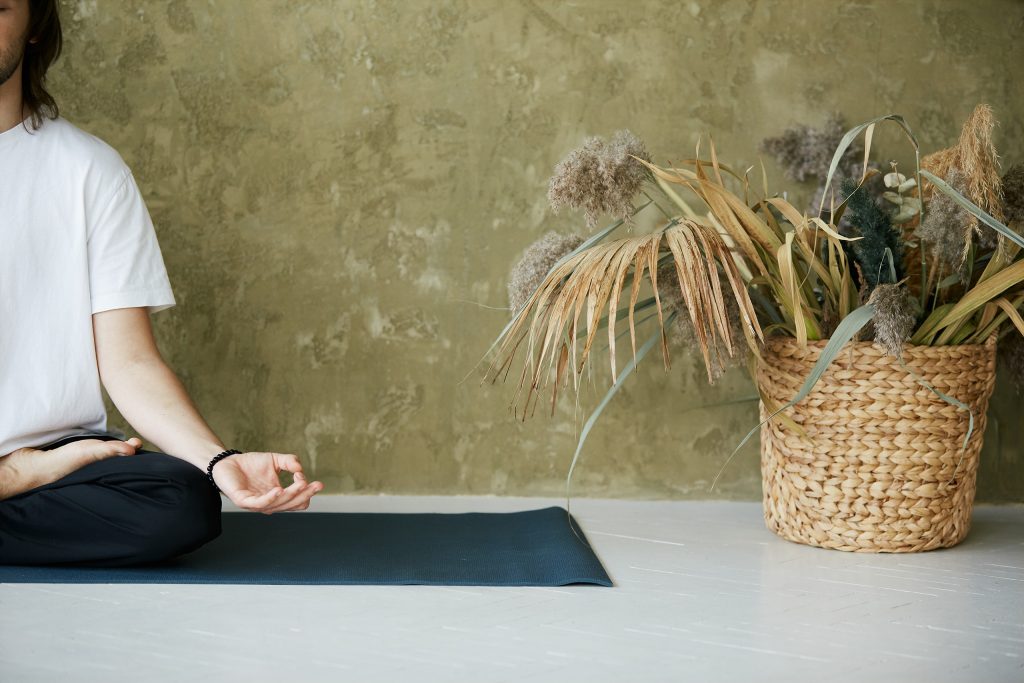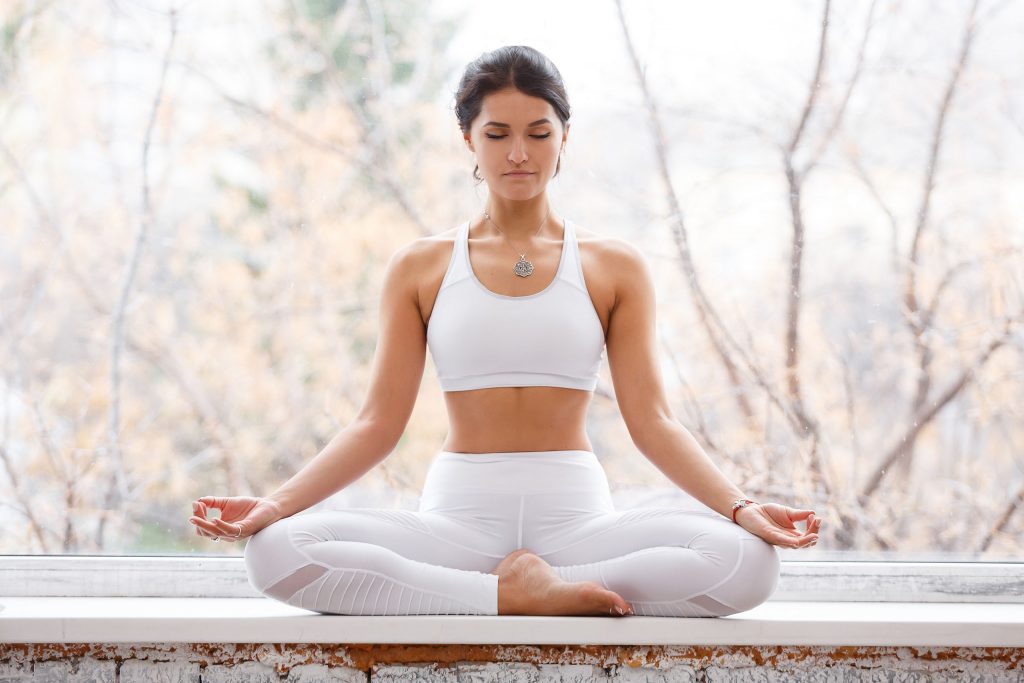
Everyday life is stressful. One task follows the next, there are countless things to do, deadlines to meet and you yourself fall by the wayside. Faster than you would like, stress becomes a permanent condition and this can have a negative effect not only on your mental but also on your physical health.
Those who go through life more mindfully experience everyday life in a more relaxed way, more serene and simply happier. Mindfulness exercises help you to become more focused and to act more consciously. With this, you will be able to control your life according to your ideas.
Mindfulness exercises are small, very simple exercises that train you to be aware of things. The aim is to make your actions more level-headed and prevent you from forgetting yourself in the stress of everyday life. This is how Reduce stress and you can withstand life's challenges more easily.
If you perform mindfulness exercises regularly, you will notice how inner peace Finding your way back into your life. You learn to recognize and appreciate the small miracles of life and live exactly in the here and now, not in the past or future. We have compiled ten of the best mindfulness exercises for you.

If you start the morning already completely stressed and with thousands of disordered thoughts in your head, it often doesn't get better in the course of the day. The body and mind scan in bed is a great mindfulness exercise for beginners. Setting your day up for more mindfulness right at the start will help you to keep reminding yourself to perform actions more consciously as you go along.
Do not jump out of bed immediately after waking up. Lie still for a while and breathe in and out consciously. Feel how your breath flows more and more through every part of your body as you inhale. Visualize how your body fills with energy.
Soon the first thoughts will try to claim your attention and that's okay. Don't frantically push them aside, but notice them, but don't go into them intensely. Let your thoughts move on like a cloud.
Ask yourself briefly how you feel right now and what your mood is. The point is not to evaluate all this, but to determine the current state. It gives you a direction on what you should pay special attention to today.
Yes, you read that right. You can actually turn tasks that come up in everyday life into mindfulness practices. This practice is not uncommon at all, because basically any activity can be done with extra mindfulness. It starts in the bathroom in the morning. Showering and brushing your teeth are among the things that happen automatically, without much thought.
But that's exactly what you should do. Visualize every single tooth you're brushing and feel into every part of your body you're lathering. You can even make a mindfulness exercise out of walking to the car. While doing this, consciously put one step in front of the other, feel the grip in your hand as you open the car door. Gently sit inside, reach for the seatbelt with care, and start your car mindfully.
At first it will seem strange to pay so much attention to all these mundane things. But if you keep at it, you will quickly notice how much you suddenly become aware of what you otherwise overlook. You will feel how much inner peace and Satisfaction gives you all this.
Do you ever catch yourself just wolfing down your food without really tasting what's in your mouth? You can turn this into a mindfulness exercise. Focus your full attention on the meal, chew properly and try to taste every single ingredient.
Integrate all your senses. Focus on your plate, not your smartphone or the TV. Listen to your chewing and the crunch and crackle of the ingredients. Feel the different textures in your mouth and notice the delicious smell that emanates from the food.
However, sometimes you just have to go fast and you don't have time to celebrate every single bite so comprehensively. Then give at least the first three bites this attention. Your consciousness also registers this, because the mindfulness network in your brain is stabilized further and further, even with the help of small steps.

If you have a little more time, then you can dedicate yourself to your senses even more intensively with the help of the hand method. Each finger represents one of the senses. The palm and back of the hand complement the whole thing with thoughts and non-judgmental perception. But let's start from the beginning. The Hand Method is about consciously perceiving and accepting the moment in all its facets.
First you mentally walk your fingers and dedicate yourself to all your senses one by one. First listen to all the sounds that surround you. Are there many sounds that resound wildly in confusion or is it rather quiet? Which sound is dominant and which is particularly quiet?
Then look around in all directions. What do you see when you look forward, backward, left, right, up, and down? What moves, what stands still, and what stands out? Do you notice anything new? What of what you see matches the individual sounds you perceive?
Let's continue with feeling. How do the clothes you are wearing feel against your skin and how does the chair you are sitting in feel? Also notice your ambient temperature, drafts and heat sources.
Then it's the turn of the sense of taste. What taste do you perceive in your mouth right now? Have you perhaps just eaten? Did the meal leave a salty, sweet, sour or even bitter taste? If you can't taste anything at all, that's fine, of course, and at least it's an insight.
The last sense you devote yourself to is smelling. What scent is coming into your nose right now and where is it coming from? Do you like it or do you find it disturbing? Does it perhaps even evoke certain memories?
Now it's your palm's turn. It represents all the thoughts that occupy you. What are you currently thinking about particularly intensely? What is bothering you and what makes you particularly happy right now?
Last but not least, it goes to the back of the hand. It is only to remind you that all that you have just perceived should remain value-free. It is not about starting interpretations. The goal is simply to perceive and appreciate everything that is happening around you with all your senses. accept.
Sometimes everything comes at once. You have to prepare for an important appointment and hundreds of thoughts are running through your head. Then the phone rings non-stop and colleagues ask you urgently for help.
It's loud, everyone is talking wildly and you have no chance to concentrate on your tasks. In moments of sensory overload, simple mindfulness exercises can help you regain your composure and focus your attention on what's important.
Stop for a second.
Take a deep breath in and out, and try to let go of whatever it is... overwhelmedInwardly, put it into words. Mentally express what has priority at this moment and reflect on it. In the long term, this approach will help you to keep a cool head even in stressful situations and not to act impulsively. Making decisions.

Fortunately, breathing is automatic and you don't have to concentrate on it all the time. But if you want to bring more mindfulness into your everyday life, this can definitely be an advantage. In this mindfulness exercise, you consciously direct your awareness to your breath.
Close your eyes and place one hand flat on your chest. Then inhale deeply through your nose and feel your chest rise. Imagine that you are inhaling a particularly pleasant scent that is now spreading throughout your entire body.
Then exhale through the mouth and visualize how you get rid of all the tension. You can also change position again and again during this exercise. Do it sitting, standing and lying down and notice the difference.
Guiding your breathing is not the only way to help you become more mindful. Simply observing your current state is also a helpful mindfulness exercise. Your breathing reveals a lot about your inner state.
When you are calm and relaxed, your breathing is calm and deep. If, on the other hand, you are stressed, your breathing will be much faster and shallower. If you notice this, you can act accordingly and calm your thoughts and feelings. It has even been scientifically proven that observing your breathing activates the parasympathetic nervous system, a part of the autonomic nervous system.
Among other things, it is responsible for the control of recovery and calming processes. It slows down your heartbeat and your metabolism and thus puts you into a kind of resting state. This does not mean that you are no longer able to perform, but that you can now look at your surroundings in a relaxed manner. It is easier for you to concentrate on the essential things again.
Surely you have heard of the term "journaling", right? This exercise is very often recommended to do something good for the mental health and Mindfulness to practice. Basically you can Journaling It's similar to writing a diary. However, this is less about documenting what happened to you today and more about what is going on inside you.
What thoughts are you particularly preoccupied with today? What feelings characterized your day? Did you feel very comfortable or uncomfortable in a certain situation?
Write down everything that is going on in your mind and emotional world. Journaling should always end on a positive note. For example, at the end, write down what you are looking forward to tomorrow.
There are countless nerve pathways on the soles of the feet, which make them particularly sensitive. This is exactly what you make use of in this mindfulness exercise. Simply walk around the room completely barefoot and feel the ground. Describe how it feels.
Is it smooth, rough, soft or hard? Is it uneven and does something constantly poke you in the foot or is it quite comfortable to walk on? Is the ground nice and warm or rather cold? Blank out everything around you and focus only on what you feel on the soles of your feet.

Meditation is not just for the experienced. Anyone can do it quite simply learn and even start doing it right away. The aim of meditation is to focus attention on yourself, block out disturbing factors and create a moment of calm.
To integrate this mindfulness practice firmly into your everyday life, you can, for example, start with a Morning meditation start the day. Don't worry, you don't have to get up much earlier to meditate. Five minutes is perfectly sufficient if you can't spare more time. Morning meditation will help you increase your cognitive performance, cope better with stressful situations and make decisions more rationally.
Mindfulness is important in order not to lose yourself in the stress of everyday life. In the daily hustle and bustle, there is hardly any time to consciously perceive what is actually happening around you. Life rushes past you, because the connection to the present is missing. If you practice mindfulness, you stay anchored in the here and now.
An Study by Dr. Matt Killingsworth confirms that mindfulness enhances the ability to be present in the present and can even lead to a happier life. With appropriate exercises you stop the incessant stream of thoughts and reflect on the moment. You get closer to yourself again and can also better empathize with others.
What drives you, what are your goals, what stops you and why are you doing what you are doing in the first place? Mindfulness exercises, but also our Visions ChallengeWe will help you to answer exactly these questions. For seven days we accompany you on the journey to yourself and together we find your vision! Join us now!

